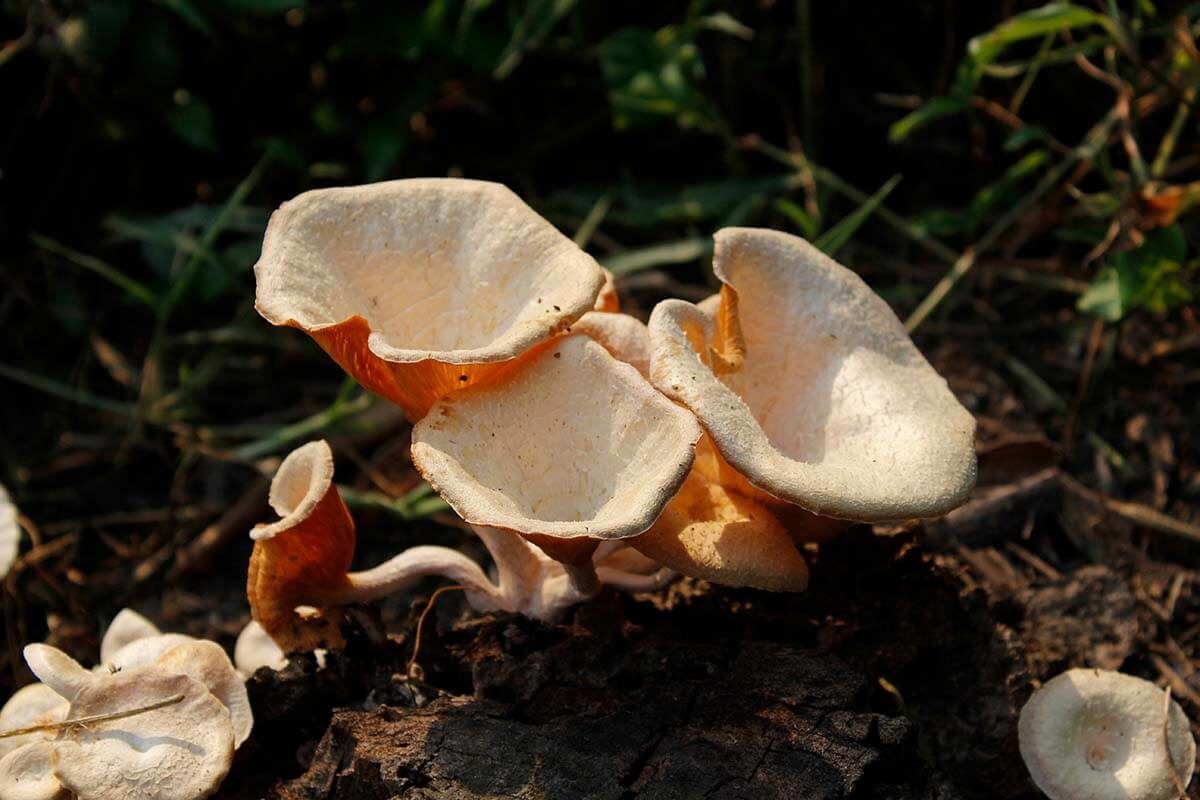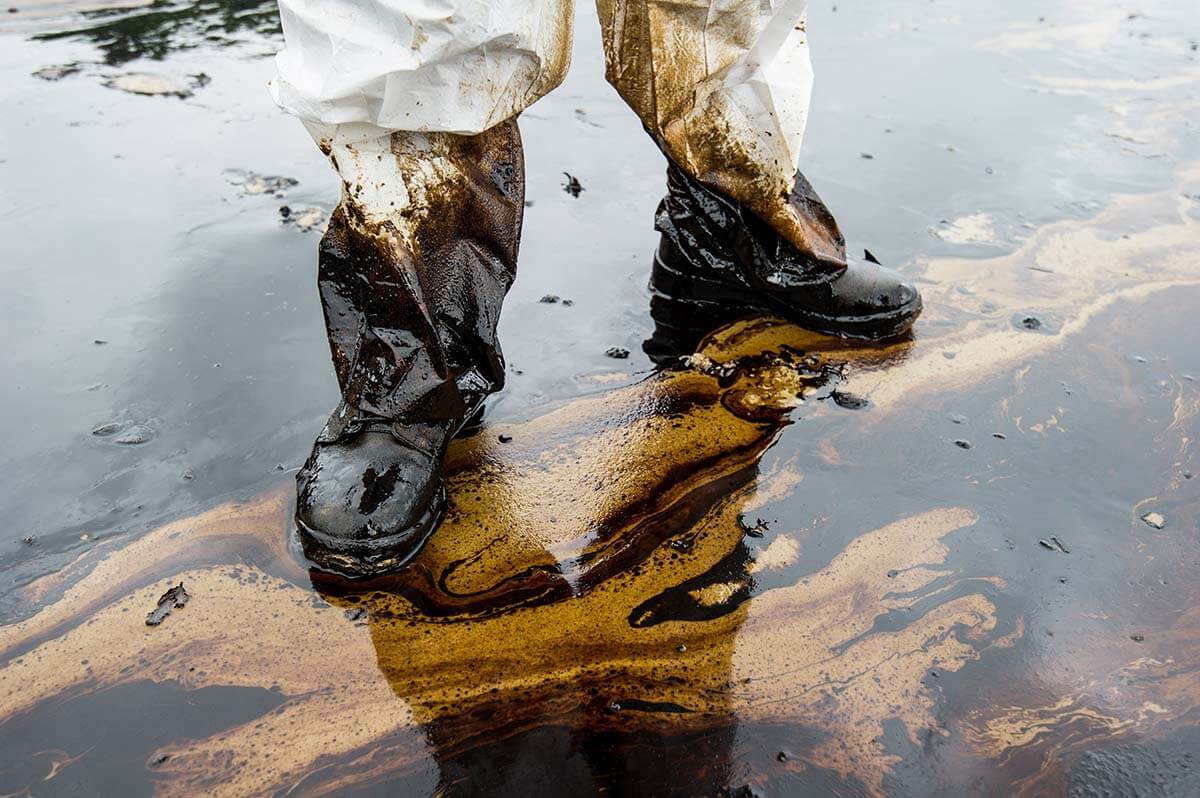
History is littered with examples of ‘mycoremediation’ – using fungi helping to digest the detritus and contaminants left by humans. New challenges could reinvigorate the field
By
‘Mycoremediation’ is a dizzying term. Put simply, it means using fungi to clean up pollution. Fungi are nature’s most vigorous agents for decomposition. For millions of years, they have evolved to exploit the detritus of other species, recycling nutrients through the ecosystem. The only organisms on Earth that decompose wood, their ability to extend through soil in filamentous mycelia, excreting digestive enzymes, allows them to adaptively decompose tough materials.
‘In principle, fungi are some of the best qualified organisms for environmental remediation. Mycelium has been fine-tuned over a billion years of evolution for one primary purpose: to consume,’ writes mycologist Merlin Sheldrake, in his 2019 book Entangled Life.
History is littered with examples of fungal clean-ups that nearly elevated the field to academic stardom. In his book Mycelium Running, mycologist Paul Stamets recalls his collaboration with the US Department of Defense to develop ways to breakdown DMMP – a neurotoxin deployed in the 1980s by Saddam Hussein during the Iran-Iraq war. In laboratory conditions, two species of ‘white rot fungi’ adapted to consume DMMP by producing digestive enzymes. The technique was never rolled out at scale.
In 2006, researchers in New Zealand showed that white rot fungi could be used to efficiently clear the pesticide PCP from contaminated soils, but subsequent research dried up.
Most famously, mushrooms were deployed to remove some of the 58,000 gallons of oil from San Francisco Bay during the 2007 COSCO-Busan oil spill. Today, the Amazon Mycorenewal Project, launched in 2007, uses petrol-degrading fungi to detoxify the soils and rivers of the Sucumbíos province in the Ecuadorian Amazon, where crude oil left from Chevron’s 350 petroleum wells still pollutes waterways. Eight years later, the project eventually gained the backing to launch ongoing scientific studies.

Stay connected with the Geographical newsletter!
In these turbulent times, we’re committed to telling expansive stories from across the globe, highlighting the everyday lives of normal but extraordinary people. Stay informed and engaged with Geographical.
Get Geographical’s latest news delivered straight to your inbox every Friday!
‘Surely large-scale studies are required. How could the field progress without flagship projects, big grants and institutional attention,’ writes Sheldrake. One theory behind the slack progress is that for companies to invest, they must acknowledge their polluting practices. ‘We are producing something that companies are sometimes forced to do. It’s hard to make a great business case for it. Or, quite frankly, a case for academic research,’ said William Mohn, in a 2019 interview with The Counter.
Underfunded, many academics have left the field. In step citizen scientists. After the Californian wildfires tore through Sonoma county in 2017, the poisonous combustion products of households and industries began leeching into nearby creeks, streams and agricultural land. Citizen science group, The Fire Remediation Action Coalition, placed 40 miles of tubing inoculated with oyster mushrooms around fire-damaged areas. Their crop, they hope, is helping to digest toxic products. ‘The truth is, bioremediation is experimental. Because of the scale of toxic ash, we had to move really quickly, which isn’t a great scientific approach,’ project coordinator Luke Ohlsen told Earth Island in 2017.

Citizen scientists, enthused by the digestive potential of mushrooms, quickly started deploying cultivated stocks across Sonoma county after the Californian wildfires of 2017
Along with wildfires, plastic pollution has become one of the most pressing environmental issues of our time. Here too, fungal research is burgeoning. In 2017, Chinese researchers isolated a fungus capable of digesting polyster polyurethane; in 2018, researchers isolated four more plastic-degrading strains from a polluted Swiss lake.
Fungi have been adopted by many environmentalists as a symbol of nature’s solution to humanity’s damages. But, ‘despite its promise, it’s no simple fix,’ Sheldrake writes. Laboratory-raised fungal strains capable of digesting polyurethane or pesticides may behave differently in the environment. Natural decomposition is also achieved by a succession of fungi and bacteria. Sheldrake and other mycologists think that these uncertainties shouldn’t soften enthusiasm, but spur more research.




